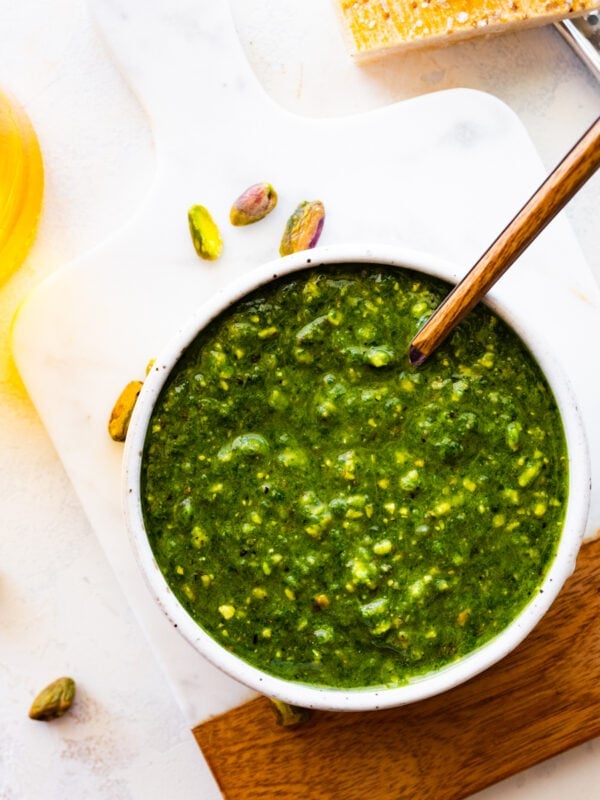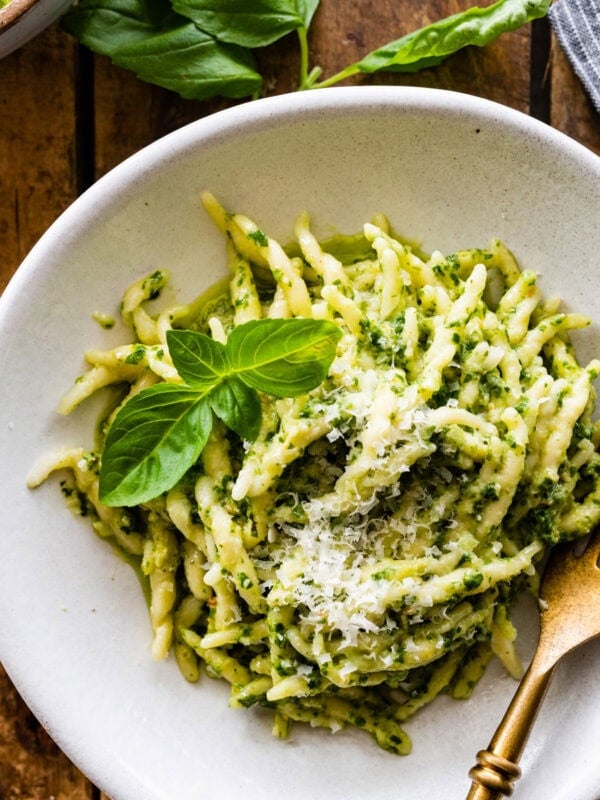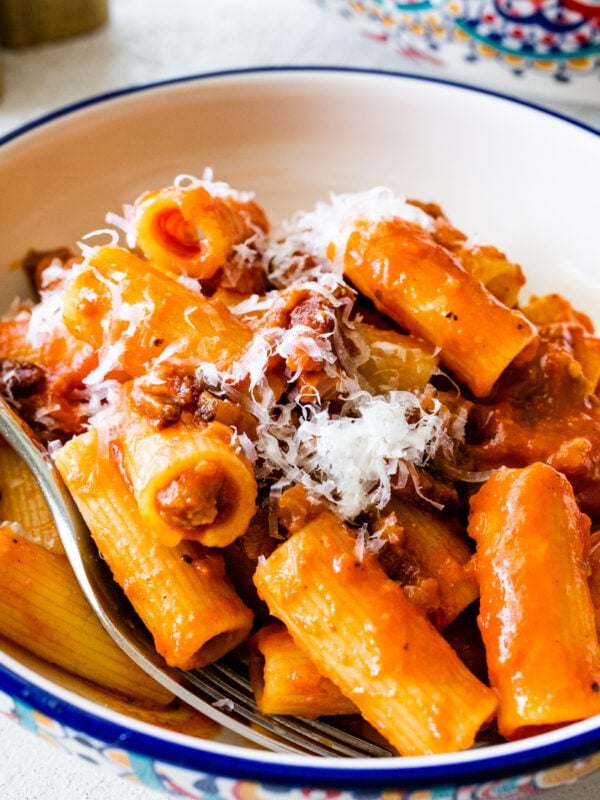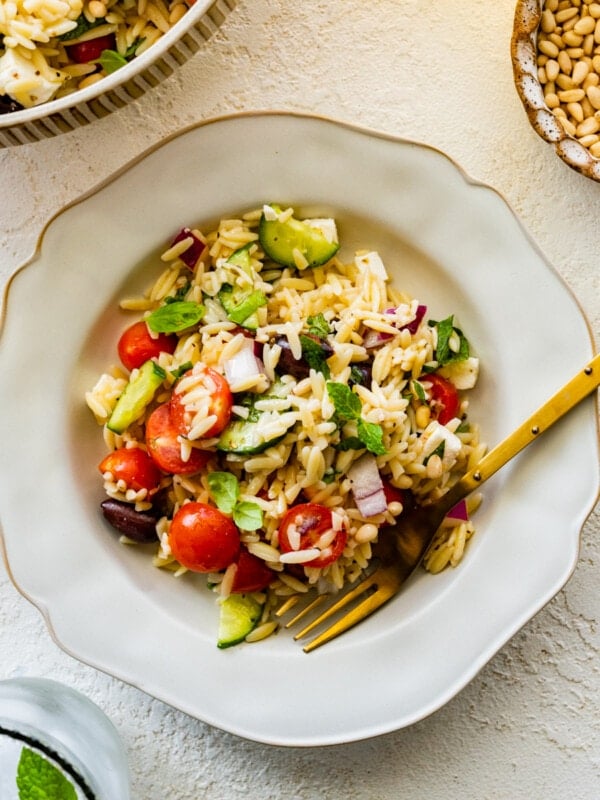This post may contain affiliate links. Please read our disclosure policy.
How long does pasta salad last in the fridge? Pasta salad is a great dish that works well as an appetizer, side dish, or even main dish and is a great option to feed a large group of people because it’s so easy to make. However, many factors make pasta salad finicky – mostly because it doesn’t have a particularly long shelf life.
With summer and cook-out season coming up, check out this “How Long Does Pasta Salad Last in the Fridge” post to learn some simple tips on how to make and store this popular dish.
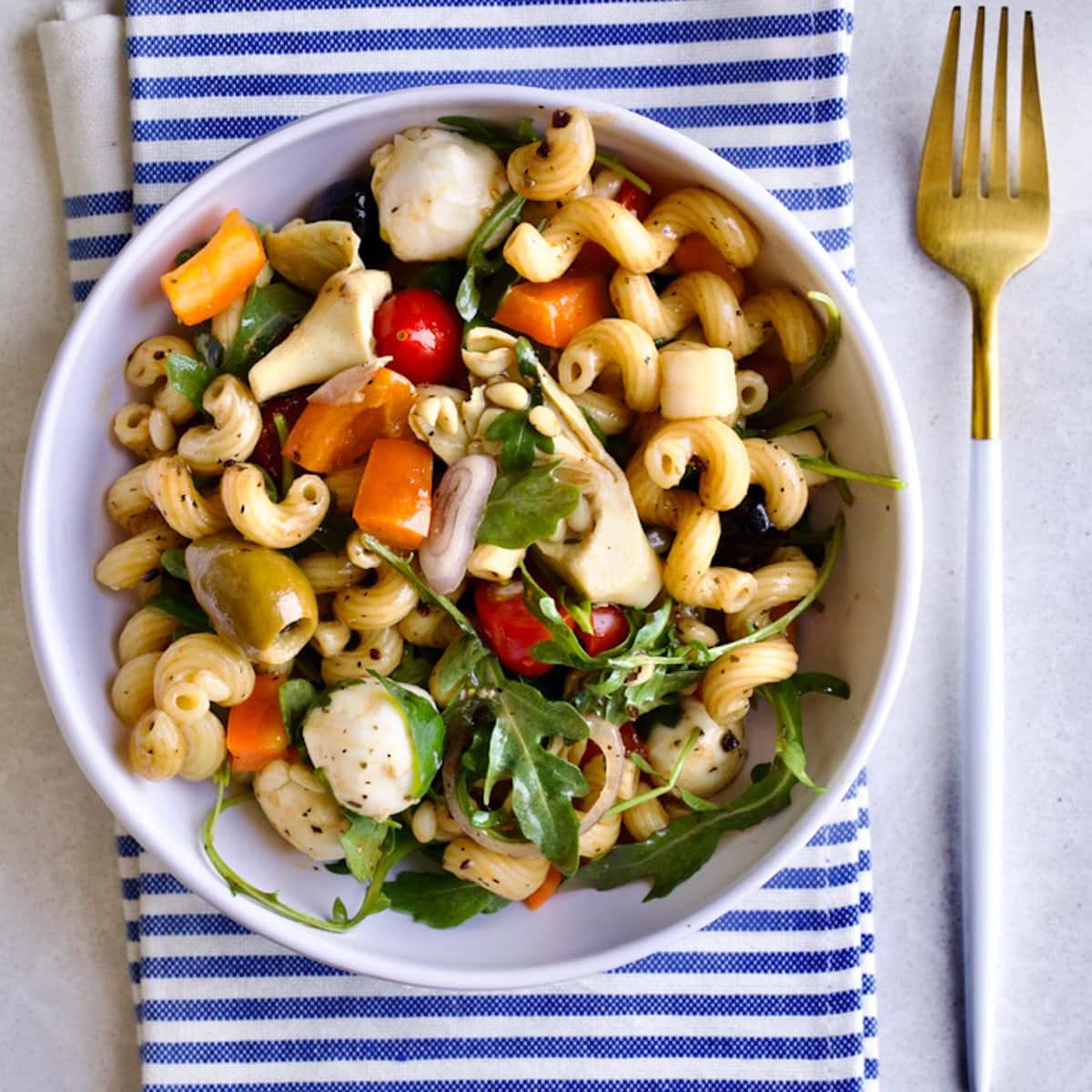
Table of Contents
- How Long Does Pasta Salad Last in the Fridge?
- How Long Will Pasta Salad Last at Room Temperature?
- How Long Will Pasta Salad Last Outside?
- Choosing the Best Ingredients for Pasta Salad
- How Do You Store Pasta Salad?
- Can You Freeze Pasta Salad?
- How Can I Refresh Pasta Salad?
- How Can You Tell If Pasta Salad Has Gone Bad?
- Pasta Salad Recipes
- Best Containers to Store Pasta Salad in the Fridge
- Storing Pasta Salad FAQ’s
How Long Does Pasta Salad Last in the Fridge?
When considering how long pasta salad will last in the fridge, you have to consider a few factors. Things like the ingredients used, how long it was left out at room temperature, and what kind of container will be used to store it are all important parts of this equation.
Bacteria can grow very quickly at temperatures between 40-140 degrees Fahrenheit so it’s important not to leave pasta salad at room temperature for more than a few hours without refrigeration.
Ingredients used will also determine how long it can last in the fridge. Pasta salad recipes that contain NO meat or dairy will last longer than those that do. Some vegetables will keep longer than others, but those with a high water content will degrade faster. Things like fresh lettuce or cherry tomatoes will release water into the salad and make your delicious pasta salad become soggy.
For the most part, pasta salad will last between 4 to 7 days if you store it correctly. Always use sealed containers or freezer-quality storage bags. (You can also freeze it for up to three months – you can read more on freezing pasta salad in the section below.)
How Long Will Pasta Salad Last at Room Temperature?
Of course, you want your perfect pasta salad to taste great when serving it to guests, so consider how long it will last at room temperature if you’re setting it out for guests to help themselves.
Most sources say that pasta salad will not stay fresh at room temperature for more than 2 hours. Though it may taste the same, as mentioned earlier, bacteria can grow rapidly at temperatures above 40 degrees, which could easily lead to food poisoning.
Pasta salads that contain ingredients like eggs, meat, or dairy can degrade faster. To avoid this, instead of using a creamy dressing, try using one that is made with a high-quality olive oil and fresh lemon juice.
How Long Will Pasta Salad Last Outside?
Is there anything better than chilled pasta salad on a hot day? Cold pasta salad is a very common dish at cookouts and barbecues during the summer, but you should be careful about how long it will stay fresh outside.
It’s never a good idea to leave pasta salad outside for a long time (more than 2 hours). Consider serving it to everyone and then bringing it back to the fridge if possible to avoid spoiling and keep it at a refreshing, cool temperature.
If you plan on keeping it outside for the event, cover the dish with plastic wrap to keep the moisture in and bugs out! Also, try to keep the pasta salad in a dark place out of the sun.
Choosing the Best Ingredients for Pasta Salad
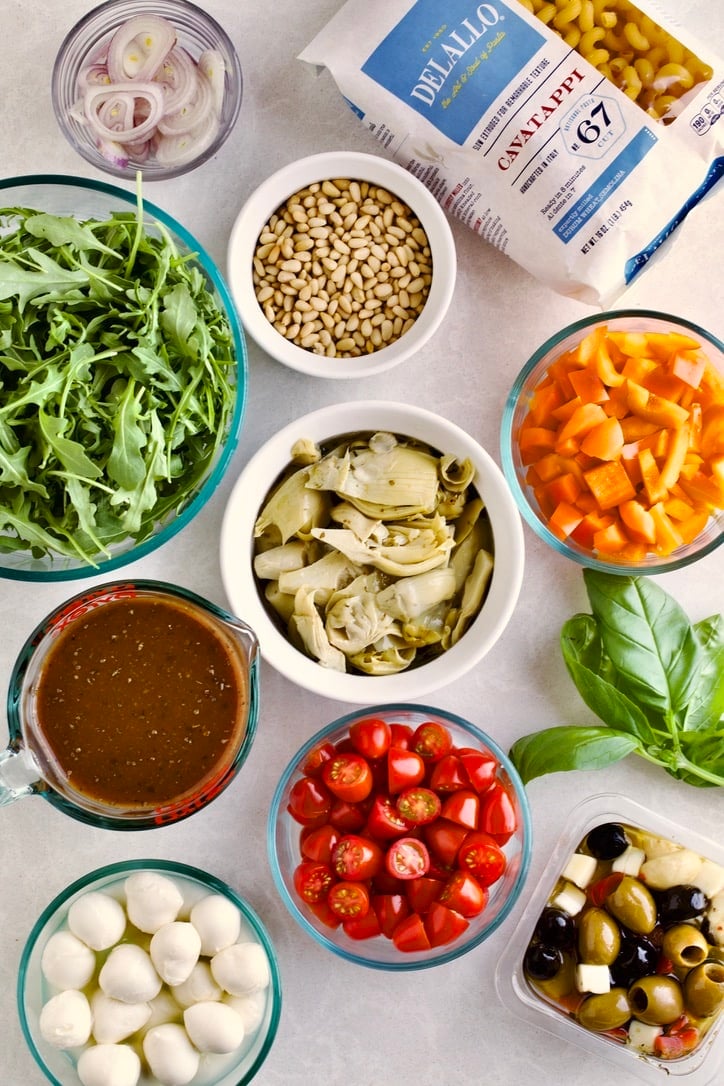
Selecting the right ingredients is one of the most important parts of making a pasta salad that will last in the fridge. Both the type of pasta and the variety of fresh ingredients make a difference to how long it will stay fresh and tasty.
It’s preferable to use dried pasta instead of fresh because it will hold its texture better when mixed with the other ingredients. The best pastas to use are small varieties like farfalle, fusilli, or rotini. Pasta like penne or macaroni is a good option because they have a hole that can capture some of the dressing and veggies inside for extra flavor with every bite!
Remember, just because spaghetti or fettuccine is your favorite pasta shape isn’t the best choice for a pasta salad; consider how easy or difficult it will be to get a bite with every component.
You will want to choose fresh herbs and vegetables that won’t lose too much moisture when sitting and make your pasta salad watery. Fresh vegetables like red onion, bell pepper, black olives, and artichoke hearts (especially if they are roasted) are all a good addition to your recipe – and a great way to get kids to eat more fresh veggies!
The pasta salad dressing is also very important. Italian dressing or a pesto pasta salad are good choices. If you plan on freezing your pasta salad for later use, consider whether it will separate or change the texture at colder temperatures. It is best to avoid buttery or fattier sauces.
How Do You Store Pasta Salad?
How you store pasta salad can make the biggest difference in retaining freshness and preventing bacteria from forming. The best way to do this is to use an airtight container or heavy duty storage bags.
If you are preparing pasta salad to eat at a later time or different day, consider prepping all the salad ingredients you’ll need ahead of time, storing them separately, then mixing it all together in a large bowl right before you are ready to serve.
If you have leftover pasta salad, you can store it in the fridge for 3-5 days or in the freezer for up to 3 months.
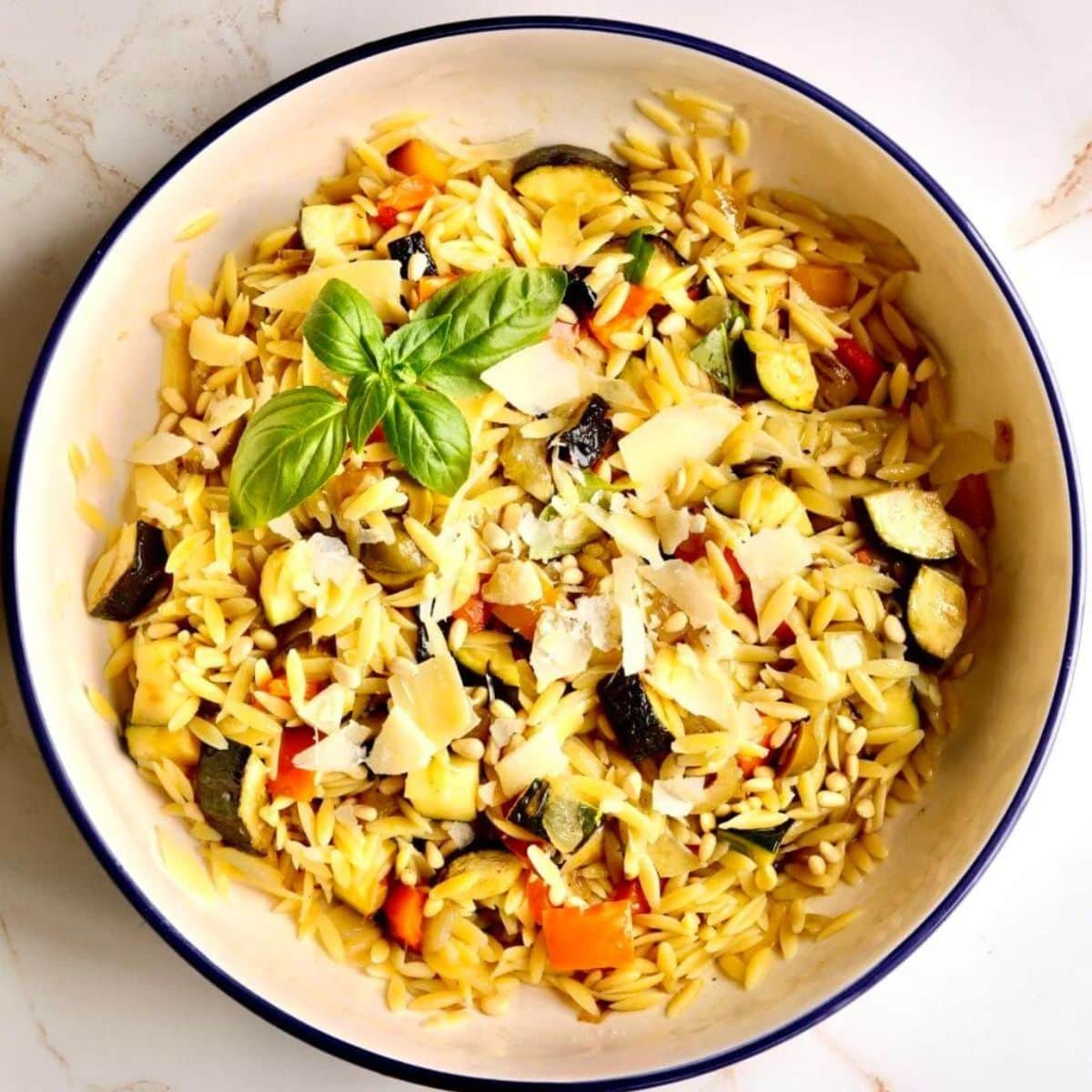
Can You Freeze Pasta Salad?
Freezing pasta salad depends on the ingredients you choose to make the dish with. For the best results, use a dressing or sauce that does not contain any dairy products so the texture remains the same after defrosting.
When frozen, dairy products separate into water and fats and have a grainy or sandy texture. It’s nearly impossible to recombine the fat and water even with constant mixing, which would tear up the pasta and other ingredients.
If you decide to freeze your pasta salad, always use freezer bags or airtight plastic containers to avoid freezer burn. Although food stored at 0℉ stays safe for consumption indefinitely, try to use your frozen pasta salad within three months for best results.
Be sure to check for signs of spoilage before you freeze pasta salad in a freezer-safe container.
How Can I Refresh Pasta Salad?
If you have leftover Italian pasta salad, it may become soggy or dried out after it’s been in the fridge for a few days. There are a few simple tricks to refresh and make it just as delicious as day one!
If your macaroni salad becomes soggy, it’s best to make sure to cook the pasta al dente – this means that it’s cooked “to the tooth” which is soft but not soggy and still a bit firm. This allows the pasta to soak up some of the dressing when mixed with other ingredients.
If your pasta salad becomes dry after storing it you can add more of the dressing to soften it back up. If you’re making a big batch, you can combine just enough to eat in one sitting, then store the cooked pasta and other ingredients separately to mix together just before eating to keep the texture just right.
How Can You Tell If Pasta Salad Has Gone Bad?
When does pasta salad go bad? It’s usually pretty easy to tell when food has gone bad or is no longer safe. Make sure you carefully check your week-old pasta salad that’s been sitting in the fridge before you eat it!
When trying to determine if your pasta salad has gone bad, the easiest things to look for are a sour smell, a change in texture (slimy or gooey), a change in color, or the appearance of mold.
If you see any of these signs of spoilage, you should not eat the pasta salad. And yes, if mold grows on only one tiny bit of pasta, you should throw the whole portion away because there will be mold spores (too small for your eye to see!) throughout the whole dish.
If you’re eating a pre-made pasta salad from the grocery store, it’s important to check for these signs, even if it’s still within the expiration date, to avoid food poisoning!
Pasta Salad Recipes
Now that you have all the information you need about storing your pasta salad properly, and how long it will last in the fridge, I have some great recipes for you to try.
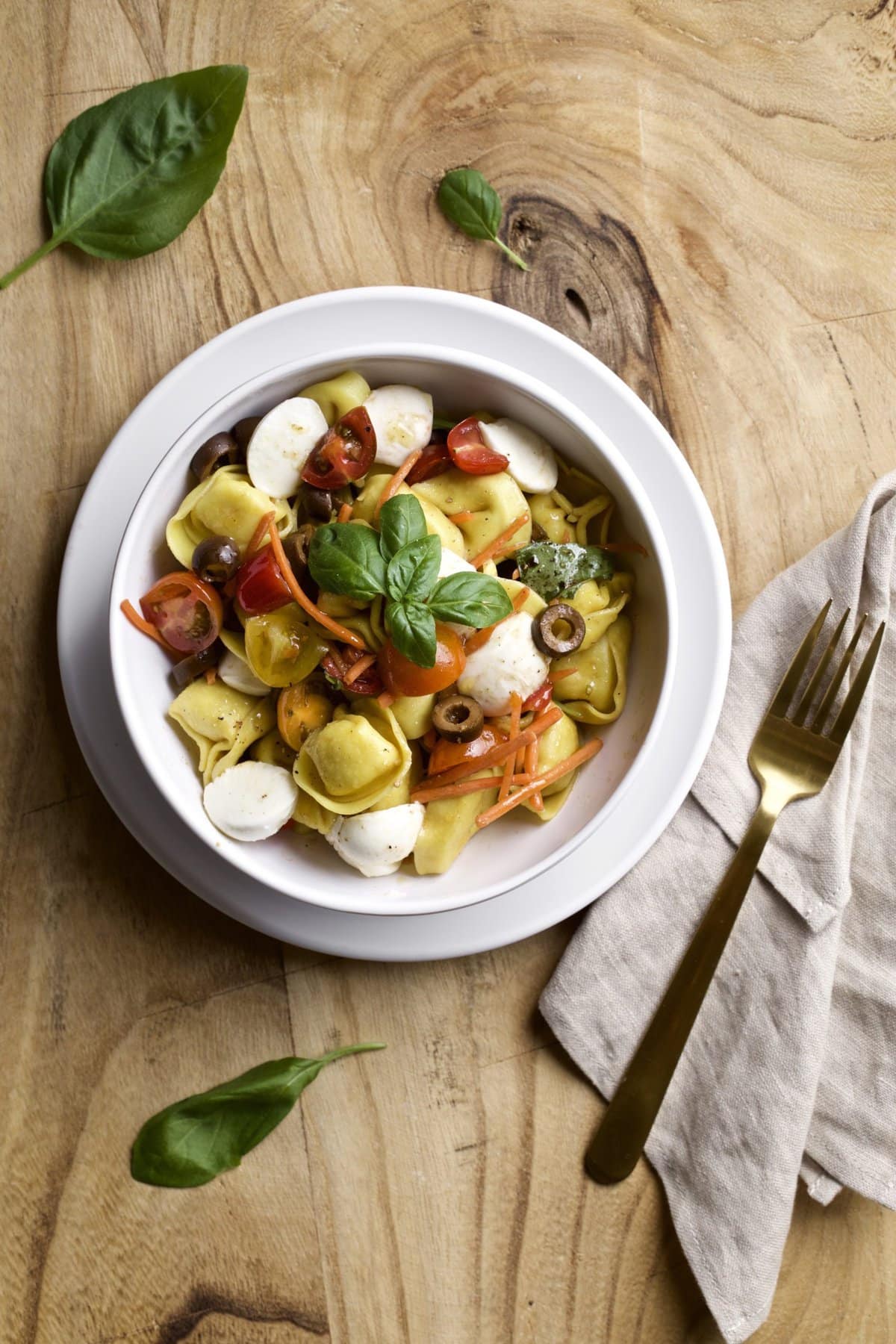
Tortellini Pasta Salad – A simple side dish loaded with classic pasta salad flavors and an oil-based dressing.
Italian Style Pasta Salad with Arugula – This is such an easy pasta salad recipe (only 8 ingredients), but you’ll be amazed at how good it tastes!
Antipasto Pasta Salad – Everyone will love this tasty recipe – even if they aren’t usually a fan of pasta salad.
Greek Pasta Salad – A healthy pasta salad with lots of veggies and feta cheese.
Italian Rice Salad – Good news for my rice lovers! This spin on pasta salad is so good you’ll want to eat it every day!
Farro Salad with Red Peppers – Move over potato salad – this has Farro as the key ingredient instead. It’s an interesting alternative to classic cookout dishes that will be a huge hit!
Orzo Pasta with Roasted Vegetables – This pasta salad is filled with roasted vegetables and is so good it can easily be a main course!
Best Containers to Store Pasta Salad in the Fridge
Here are a few containers I love to store leftover pasta in the fridge:
- Rubbermaid Brilliance 100% leak-proof food storage containers feature BPA-free Tritan lids and bases with 360-degree clarity; airtight seal and secure latches prevent spills and leaks and help keep food fresh and secure.
- SALIENT Food Storage Containers with Lids, Glass Meal Prep Containers, Glass Containers for Food Storage with Lids, BPA Free & Leak Proof.
- Collapsible Food Storage Containers with Airtight Lids & Air Vent, 40.5 oz, Kitchen Stacking Silicone Collapsible Meal Prep Container Set for Leftover, Microwave Freezer Dishwasher Safe.
And learn how you can store your fresh pasta without sticking!
*contains affiliate links
Storing Pasta Salad FAQ’s
If your pasta salad has ever come out sticky, not rinsing the pasta might be why. Cooked pasta is coated with starch that can mix with the dressing and turn into a gooey texture. When you rinse the pasta under cold water after cooking it will remove the starch, help the dressing stick to the pasta better, and avoid the slimy texture.
Medium-soft cheeses work best in pasta salad because they aren’t too melty or too hard. Try cheeses like mozzarella or feta. If using parmesan cheese, wait to add it on top instead of mixing in with the other wet ingredients.
Foodsafety.gov says that mayonnaise-based dishes like egg, chicken, ham, or tuna pasta salads can last up to 4 days in the fridge if stored properly.
Make sure to leave a ⭐️star rating on the recipe card and comment below if you try any of these recipes. I love to connect with you through my recipes.
I would love for you to tag me on Instagram @cucinabyelena so I can see your delicious Italian recipes. To get more ideas, follow me on Pinterest.
